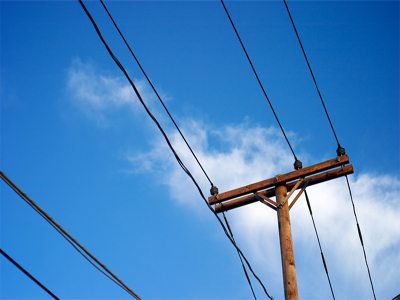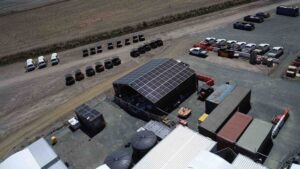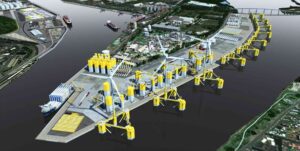As the federal Coalition’s new energy minister launches an extraordinary attack on wind and solar, a new report has found that the surge of renewable energy generation coming online is the “only thing” currently helping to reduce electricity prices in Australia.
The National Energy and Emissions Audit published by The Australia Institute, and authored by veteran energy market analyst Hugh Saddler, charts the “unprecedented” growth of renewable energy capacity on the National Electricity Market, largely thanks to the Renewable Energy Target the Coalition government tried to kill.
The report reveals that in the four months since the end of April, wind generation capacity connected to the national grid has increased by 14 per cent, while large-solar has increased, from a low base, by 93 per cent.
As of August 31, large-scale renewable energy makes up a record breaking 19.7 per cent of the NEM – 25.6 per cent if rooftop solar is included.
And there’s plenty more to come. As the report notes, the government’s own Energy Security Board has predicted 41 per cent more wind and 300 per cent more solar on the NEM by the end of 2020 – “the equivalent of two Liddell power stations.”
All this new renewable capacity, Saddler notes in comments on the report, is working to increase competition and put downward pressure on power prices – a job that new PM Scott Morrison continually claims as one of his top policy priorities.
And yet, the Morrison government remains determined to demonise renewable energy at every opportunity, and to push for new “baseload” generating capacity, preferably from coal.
As Giles Parkinson reports, just this weekend federal energy minster Angus Taylor told Sky News that state-based targets would lead to “de-industrialisation” and send a “wrecking ball” through the Australian economy.
The comments came in an interview on Sky News on Sunday night, and little more than a week after Taylor told radio stock jock Alan Jones that there was already “too much” wind and solar in the grid.
The marked change in sentiment on renewables is also being reflected in conservative media, with an editorial from the AFR on Friday questioning whether the “force-feeding” of renewables into the grid by state governments was in the national interest.
“Despite the bad rap renewables often get from government, right now (they) are the only thing putting downward pressure on electricity prices,” Saddler said in comments accompanying the report.
“It is ironic, or perhaps symbolic, that these dramatic changes are so clearly demonstrating the success of policy in place since 2009, with a 2020 completion date, in the same month that the government finally abandoned any attempt to design energy and emissions policy to follow on through the 2020s,” he notes in the report.
“It is hard to see how more renewables, supported by a credible electricity emission reduction target of 45 per cent would be economy wrecking,” Saddler said.
The TAI report highlights what’s happening in the market in South Australia – the state the federal government likes say exemplifies the disastrous result of no coal and lots of renewables.
In August, the report shows that wind generation in SA reached record levels, both on average daily generation and share of total electricity supplied for the month (fig 10).
Together with grid-scale solar, wind combined to contribute 58.5 per cent of total electricity supplied in the state, while gas generation contributed 46.2 per cent, and a further 5.7 per cent came from rooftop solar.
“As clearly these fractions add to more than 100 per cent, so South Australia was a net exporter of electricity to Victoria during August, as it also was in July,” the report says.
“On most days during July and, particularly, August, average spot wholesale prices were at or below the levels seen in the other mainland states.”
For the month, average wholesale prices were $72/MWh in South Australia, $79/MWh in Victoria, $82 per MWh in Queensland and $93 per MWh in New South Wales, the report finds.
“It is certainly symbolic of the current government’s energy policy confusion that they should be calling for new investment in generation capacity while ignoring the new capacity currently being built,” the report says.
“New wind and solar generators will supply over 16TWh electrical energy to the NEM every year from 2021 onward.
 “16TWh per annum is just under 9 per cent of current total NEM generation, almost exactly equal to the output of Eraring, Australia’s largest power station, over the past year, and about twice the output of Liddell, the foreshadowed closure of which in 2022 is of such interest to the government.
“16TWh per annum is just under 9 per cent of current total NEM generation, almost exactly equal to the output of Eraring, Australia’s largest power station, over the past year, and about twice the output of Liddell, the foreshadowed closure of which in 2022 is of such interest to the government.
“It is not clear why government statements ignore that this new capacity, now coming on line, will contribute to lowering wholesale electricity prices, while emphasis is placed on the prospect of prices being reduced by a new coal fired power station, which could only begin operation in, say, five years time.
“The preference for coal is made even more incomprehensible, given that a coal-fired generator must, at the bare minimum, realise a price that covers the cost of the coal it is burning, whereas wind and solar generators have zero fuel costs.
“Regrettably, it appears that the current government has no policy to address the serious task of, in the words of AEMO’s Statement of Opportunities, ensuring the construction after 2020 of ‘new utility-scale renewable generation…complemented by storage, distributed energy resources (DER), flexible thermal capacity, and transmission’.”












